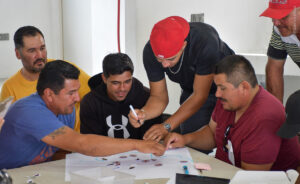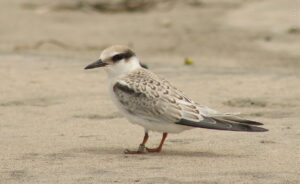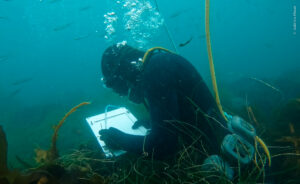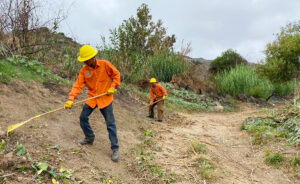Banderas Bay is a spectacular natural horseshoe-shaped bay, located in the municipality of the same name, on the coasts of Jalisco and Nayarit. With an extension of 100 km, it is the largest in our country. As with many natural sites in our region, with an astonishing wealth of landscapes and broad biodiversity, Banderas Bay attracts many tourists.
Thus, this makes it a site of conservation interest. Banderas Bay is located in the Marietas Islands National Park, declared a Natural Protected Area since 2005.
One of the activities carried out by our experts in Banderas Bay is the surveillance of touristic tours throughout the year, especially in summer, with 23 000 visitors in summer. This means an increased volume of boats ranging from 250 to 1,500, depending on the season. The most common route for boat trips departs from the fishing village of Cruz de Huanacaxtle, although there is also an important number of boats departing from Punta de Mita, Puerto Vallarta and Nuevo Vallarta. The most popular landing sites within Islas Marietas National Park are Playa del Amor and Playa Nopalera.
The intense volume of tours involves implementing a surveillance circuit in the bay and surrounding islands by park rangers hired by the National Commission of Natural Protected Areas (CONANP), the Bahía Unida organization, and of course, our team of experts. Surveillance patrols are extensive, accumulating a total of 7,344 nautical miles in 2022. Through this work, irregular vessels are detected and a culture of respect for the natural environment is promoted among visitors, ensuring that tourists stay in authorized areas and avoid engaging in activities that are not permitted.
Some of the species that inhabit or visit the place are the Humpback Whale, also known as Yubarta (Megaptera novaeangliae), and the Olive Ridley Turtle (Lepidochelys olivacea), the smallest of all sea turtles, measuring about 70 centimeters, considered vulnerable by the International Union for Conservation of Nature (IUCN).
As for seabirds, the Flanged Tern (Onychoprion anaethetus) is of special conservation importance since the Marietas Islands’ archipelago concentrates half of the world’s bird population. A similar case occurs with the Brown Booby (Sula leucogaster), which has its largest breeding colony in this protected site.
Join us to protect and conserve wildlife and ecosystems in Banderas Bay. Together we make a difference.
















